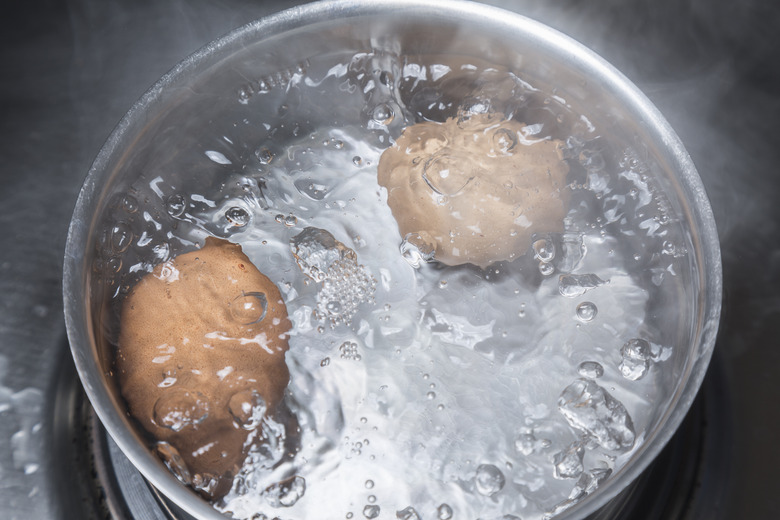Uses Of The Boiling Point Elevation
Liquids that contain dissolved substances have increased boiling points. This effect is called boiling point elevation, and it's an example of a colligative property — a property that depends on the number of solute and solvent molecules but not the identity of the solute. Boiling point elevation does not have many uses in science, although there are a few practical uses you've probably encountered in everyday life.
Antifreeze
Antifreeze
Ethylene glycol or antifreeze helps prevent the water in your vehicle's radiator from freezing through freezing-point depression. But you may not have realized that it also elevates the boiling point of the fluidas well. By raising the boiling point, it helps to protect against boil-overs. Many brands of antifreeze will list both the amount of boil-over protection and the freeze-up protection offered.
Cooking
Cooking
Adding salt to water before or while heating it will increase its boiling point, so the water will actually be hotter than it would otherwise be when it comes to a boil. The amount of this increase, however, is quite negligible at low salt concentrations; adding a couple grams of salt to 10 cups of water, for example, would only yield a boiling point elevation of about 0.015 degrees Celsius, which will not affect your cooking significantly. Nonetheless, cooking is one use of boiling point elevation. It's also important to note that — contrary to myth — adding salt to water will not make it boil faster. Quite the contrary, in fact, it will take slightly longer to boil, since its boiling point has now been elevated.
Measurement of Molar Mass
Measurement of Molar Mass
Boiling point elevation depends on the identity of the solvent and the concentration of solute particles, but not the identity of the solute. Consequently, just like freezing point depression, boiling point elevation can be used to determine the molar mass of a solute. If the solution is an electrolyte — one containing a substance like sodium chloride, for example, which splits up when it dissolves — this procedure becomes somewhat more complicated, because the number of particles produced by dissociation of the solute must also be taken into account. Chemists nowadays generally use techniques like mass spectrometry to determine the molar mass of compounds, but boiling point elevation and freezing point depression are still viable alternatives.
Sugar Refining
Sugar Refining
Once a sugarcane crop has been harvested and the cane juice extracted, it must be refined to produce crystalline sugar for consumption. At some stages during the process, the cane juice or syrup is boiled, and the temperature at which it boils will depend on the sugar concentration. In fact, the boiling point elevation offers a way to monitor the level of saturation of the solution, which is an important consideration for crystallization.
Cite This Article
MLA
Brennan, John. "Uses Of The Boiling Point Elevation" sciencing.com, https://www.sciencing.com/uses-boiling-point-elevation-8344665/. 13 March 2018.
APA
Brennan, John. (2018, March 13). Uses Of The Boiling Point Elevation. sciencing.com. Retrieved from https://www.sciencing.com/uses-boiling-point-elevation-8344665/
Chicago
Brennan, John. Uses Of The Boiling Point Elevation last modified March 24, 2022. https://www.sciencing.com/uses-boiling-point-elevation-8344665/
